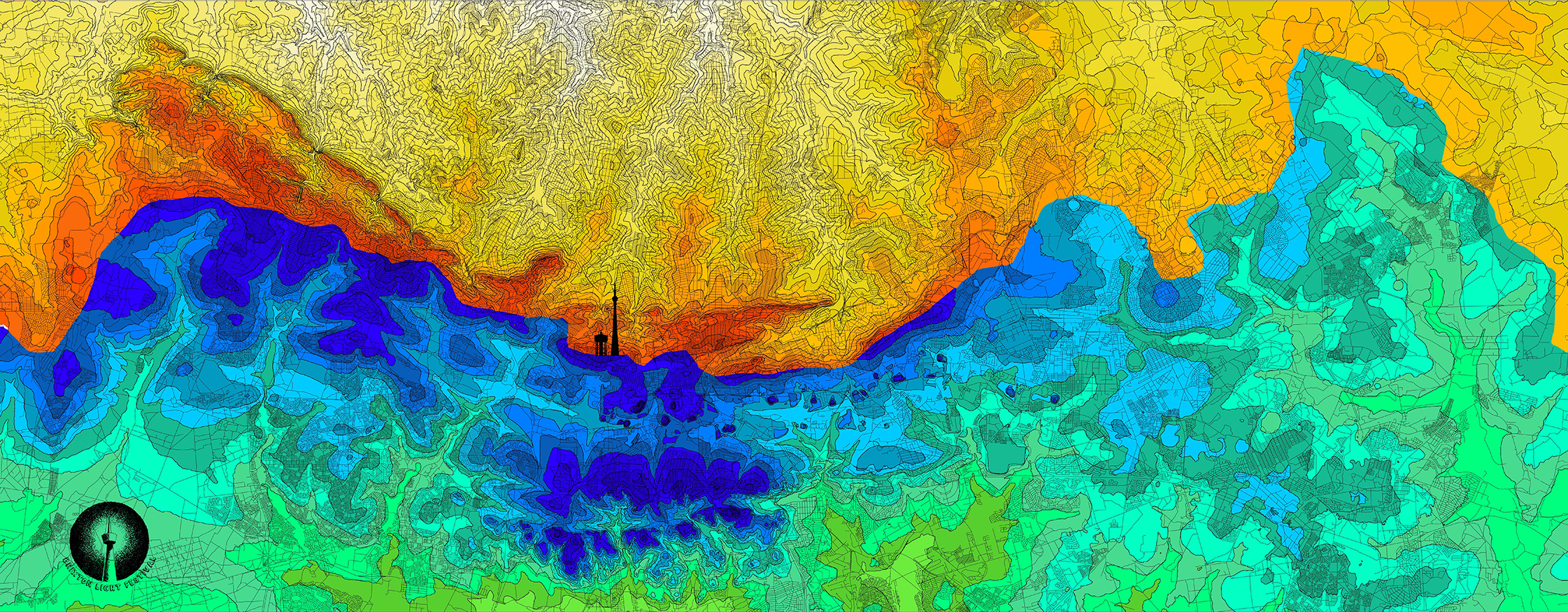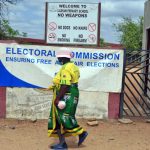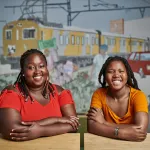COMMUNITY SOLUTIONS
The Brixton Light Festival shows what can happen when a Johannesburg suburb comes together

While residents in many Johannesburg suburbs spend a fortune on hi-tech security, some Brixton locals take a less restrictive and expensive approach to safety.
Too many people are thinking of security instead of opportunity. They seem more afraid of life than death. – James F Byrne
In the 1990s, when then president Nelson Mandela wore a cap that said, “I don’t do crime,” Justin Foxton, then recently returned from the UK, began an initiative called, “Stop Crime, Say Hello”. It was based on the premise that it’s harder to hurt someone once you’ve looked them in the eye. That if you behave humanely, others are likely to follow.
When you strip everything from the Brixton Light Festival, the same principle remains: that we are all safer when we know one another and do things together.
At the end of a week marked by the tragedy of the Albert Street fire in Johannesburg, the Brixton community observed a minute of silence and the National Youth Orchestra performed Aaron Copland’s, Fanfare for the Common Man in recognition of the 76 lives lost just a few kilometres away. Tribute was also paid to members of the Brixton fire department who were at the festival.
It was the biggest and brightest Brixton Light Festival, a welcome example of what happens when a community works together over time.
The festival attracted at least 3,000 visitors from Brixton and further afield. The event is an inclusive one, lighting up not only the suburb but also the tower that marks Brixton’s place in Joburg.
Brixton is a very mixed suburb. It is home to young families, migrants, single professionals, people who live on the streets, elderly people who have spent their whole lives there, eternal students, artists, business people, shopkeepers and academics.
Asked why they live in Brixton, residents have many reasons.

Children play on a merry-go-round during the annual Brixton Festival Of Lights in Johannesburg, South Africa, 02 September 2023. EPA-EFE/Kim Ludbrook
Some came because friends lived here; they could afford the small houses and modest properties; it has a park and it’s walkable without feeling fear; it’s a friendly place; people greet each other and all sorts are tolerated; they feel they can make a life and grow old here. Children play together in the streets and leap from garden to garden, over back walls and fences.
There is a strong sense of community. In the weeks before the festival, you couldn’t walk a block with one of the organisers without being stopped half a dozen times by people wanting to participate in the event.

A local Indian heritage group performs during the annual Brixton Festival Of Lights in Johannesburg, South Africa, 02 September 2023. EPA-EFE/Kim Ludbrook
“Micro projects” lead up to the day: there is a community mapping project, a project to decorate the alleyways, a crew of young photographers who document it all.
The “Ladies of the Light”, some of them seasoned seamstresses and others new to the craft, sew costumes, flags and bunting for the parade.
On Saturday, it all came together. This year the theme centered on the watershed that runs along the ridge of the suburb – having come from the Great Rift Valley, making its meandering way to the Atlantic and Indian oceans. Compelling combinations of light and water are on display everywhere.

Mark Schaerer’s map of the watershed that he made for the festival showing which side goes to the cold Atlantic, and which to the warmer Indian Ocean.
Kingston Frost Park – an ongoing project of some years – was glowing. This was a community out on the streets, busy and productive in its communal interests.
As darkness fell and the lights went on, a giant puppet on a bicycle carried a gentle, anti-xenophobia message. Several houses along the parade route were lit up in extraordinarily creative and gorgeous ways, including one façade miraculously transformed into an oceanarium.
The “Local Vocals” sang, orchestras and bands played (the Field Band returned for the second year), there was food, a market and theatre groups performing achingly beautiful stories of migration and the environment.

Scenes from the Brixton Lights Festival, Johannesburg. (Photo: Mark Heywood)
Everywhere there were children with lights on their costumes, many holding lanterns made from recycled plastic bottles. Families of all shapes and sizes joined in the show. With such a child-friendly focus, the event is an alcohol-free one.
In the run-up to the festival, the city council made sure all the streetlights were working, that there was proper traffic management and that public safety measures were in place. Some city officials joined in the fun.
The Brixton Community Forum has a close relationship with the reclaimers who forage for and separate recycling in Brixton and the surrounding suburbs. They are valued as service providers and treated with kindness and respect. Residents say the relationship with them makes them think twice about what they throw out.

Scenes from the Brixton Lights Festival, Johannesburg. (Photo: Mark Heywood)
The reclaimers participated in the parade on Saturday, with costumes made from their hauls, while the African Reclaimers Organisation (ARO) helped to transport sound and lighting equipment in their recycling truck. When local schools study recycling, the ARO team teaches them about what happens to things that are discarded.
Children are important beneficiaries of projects in Brixton, but they also participate in other ways. Most of those who are involved have children of their own and they are growing up with a very hands-on view of what community means and what being safe means. While their parents and their friends and neighbours work together to achieve collective goals, children often find themselves on the peripheries of design or planning meetings – and as they grow, they begin to contribute ideas and participate in making them a reality.
Community members know them, tease them, notice their achievements, include them. One adult says: “We see all our local children; they can’t get lost or do bad things – we’ll turn them around.” Being known and recognised in the community means that they are looked out for, and that in an emergency there are many places for them to go for help. They are learning through experience what it is to live in a world that offers love and protection. All this is conscious and not coincidental – the community activists promote the idea of children as urban citizens, with rights and responsibilities, whose views and needs are as important as those of adults.

Scenes from the Brixton Lights Festival, Johannesburg. (Photo: Mark Heywood)
In between Light Festivals, the Brixton community uses its connectedness to keep the good stuff coming. During Covid, there was a roster set up for soups and stews to feed those who couldn’t afford to feed themselves. The children who participate in the Shade art project are fed every Saturday.
“Some come for the food, but they stay for the art.”
There’s a group (of men and women) who embroider small quilts for babies born in Brixton.
It’s hard work and done on a shoestring budget, fuelled by goodwill rather than money. The organising team confesses that everyone, at one point or another, threatens to give up and walk away. Asked if they will do it again next year, there is a collective eye-roll followed by a resigned confirmation.

Scenes from the Brixton Lights Festival, Johannesburg. (Photo: Mark Heywood)
Communication is via four WhatsApp groups to which many belong. Everyone laughs a little when asked, why four? Community WhatsApp groups can be very divisive.
“Because sometimes you have to step away from a WhatsApp group for a while. People get angry or silly and send messages you don’t want to read… they overstep.”
Brixton Festival is a showcase of what can be done by the collective; what happens when enough people realise that if they want to live in a place that is home, they need to think and act collectively, to know and support each other and the most creative among them, to demonstrate what a shared vision looks like in action.
The theory speaks of “demystifying the other” – the practice delivers people who are good neighbours. Everyone in Brixton is safer for it, more aware of how their individual actions affect one another, and of how caring for and nurturing one another makes all of them less vulnerable and more resilient.
The festival celebrates creativity and diversity and in doing so creates community and shines a light beneath which everyone can go safely and happily into the night. DM
The Brixton Light Festival is one of an ongoing series of Community led and Municipal Case Studies that highlight contemporary local safety practice across the country.
Barbara Holtmann is a feminist Urban Safety and Social Systems Practitioner, a director of Fixed.Africa – supporting collaborative integrated strategies and interventions, with a focus on strengthening government policy and responses to vulnerability and fragility, particularly for girls and women, community safety and development. Email: barbara@fixed.africa ; [fb] www.facebook.com/BrixtonBeautiful; @BrixtonBeautiful; [twitter] @BrixtonCom

















 Become an Insider
Become an Insider
Comments - Please login in order to comment.